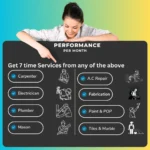Essential Settings After Installing WordPress: Your First Steps
Once you’ve installed WordPress, the next step is configuring the essential settings after installing WordPress. Proper setup ensures your site is secure, fast, and ready to rank well in search engines.
This guide covers all key settings for beginners to optimize their WordPress website from the start.
For detailed, step-by-step help, check out our WordPress Website Mastery Course.
1. Set Your Site Title and Tagline
Go to Settings → General to add a meaningful site title and tagline that reflects your brand or purpose.
2. Configure Permalinks for SEO
Navigate to Settings → Permalinks and select the “Post name” option. This structure is SEO-friendly and clean for users.
Learn more about optimizing WordPress SEO in our guide: WordPress SEO Tips for Beginners.
3. Set Your Timezone and Date Format
Under Settings → General, set your timezone, date, and time format to ensure correct scheduling and timestamps.
4. Enable or Disable User Registration
If you want visitors to register, enable membership under Settings → General. Otherwise, keep it disabled for security.
5. Configure Discussion Settings
Go to Settings → Discussion and manage comments, moderation, and notifications based on your preferences.
To learn how to add contact forms easily, check: Best Contact Form Plugins for WordPress.
6. Set Up Media Settings
Under Settings → Media, adjust image sizes and organization options to optimize uploads and page speed.
Optimize your images further with: How to Speed Up a WordPress Website.
7. Install and Configure an SEO Plugin
Install a plugin like Rank Math or Yoast SEO to control metadata, sitemaps, and indexing.
8. Set Up Your Homepage and Blog Page
Under Settings → Reading, decide if your homepage displays latest posts or a static page, and select pages accordingly.
Need help customizing your site? See: Customize Your WordPress Site Without Code.
9. Enable SSL and HTTPS
Ensure your site uses HTTPS for security and SEO benefits by installing an SSL certificate via your hosting provider.
Learn about hosting options here: WordPress Hosting: What You Should Know.
10. Set Up Backups and Security Plugins
Install trusted plugins for backups (UpdraftPlus) and security (Wordfence) to protect your site.
Learn how to backup your site: How to Backup Your WordPress Website.
Final Thoughts
Configuring these essential settings after installing WordPress lays a strong foundation for your website’s growth and performance.
Ready to master all WordPress essentials?
👉 Join the WordPress Website Mastery Course for complete guidance.


 Subscription
Subscription Performance Subscription
Performance Subscription Premium Subscription
Premium Subscription Base Subscription
Base Subscription Furniture
Furniture Bed
Bed Kitchen
Kitchen Almirah and Wardrobe
Almirah and Wardrobe LCD Cabinet
LCD Cabinet Verified Partner
Verified Partner Earn Money
Earn Money

 AI & Data Science
AI & Data Science Business & Startup
Business & Startup Cybersecurity & Cloud
Cybersecurity & Cloud E-commerce & Sales
E-commerce & Sales Marketing & Growth
Marketing & Growth Web/App Development
Web/App Development